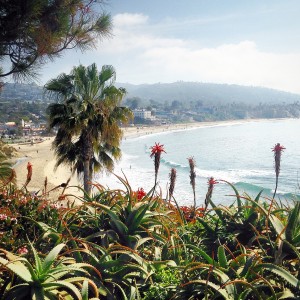My name is Sarah, and I am entering my fifth year as a Sociology Major. For the last year I have been lucky enough to escape from the Vancouver rain by living in sunny Orange County, California. I take full advantage of the beautiful weather by running, hiking, and exploring local beaches where I frequently see dolphins! When I am not outside I work at elementary and middle schools, where I am constantly teased for being Canadian and saying “washroom” and “pencil crayons”.
English 470A Canadian Studies also referred to by Dr. Erika Paterson as Oh Canada….Our Home and Native Land? is a Canadian literature course in which we will examine the relationship between Indigenous and European traditions of literature and orature. More specifically, we will be analyzing these stories through a historical lens that challenges colonial narratives and representations. Through this process we will have a better understanding of the connection between nation building, and the development of a Canadian literary canon. Importantly, this course will also work to question whose stories we choose to listen to and whose do we choose not to hear or ignore. The power of stories and national identity has a strong connection to my country of birth, South Africa.
I was born in the busy port city of Durban, KwaZulu-Natal South Africa and lived there until I moved to West Vancouver at the age of 9. (KwaZulu-Natal means “Place of the Zulu”). Many people are unaware that South Africa is a culturally and linguistically diverse nation with 11 official languages, due to the singleness of its literary system where Afrikaaner and English authors are most celebrated. During apartheid ( meaning “seperateness” or “segregation” in Afrikaans) racial discrimination was evident with a ban or exile on black writers. The writers who received international recognition during apartheid were all white. South African nationalism in the 90’s worked to promote one voice, thus with the end of apartheid and the emergence of previous unheard voices it raised questions of what it meant to be South African. Currently, South Africa’s literary identity is shifting thanks to authors such as Niq Mhlongo Mhlongo, who writes about the culture of Soweto states that “there are more black novelists today than there ever were in the history of South Africa”.
Seeing the transition that the South African literature community has undergone in these past years, has made me interested to learn more about the current state of Canadian literature. I also hope to read contemporary Indigenous pieces of work, and to learn different storytelling techniques that are unique to my knowledge. Lastly, I am looking forward to reading the blogs of other students to gain new perspectives of what Canadian identity means. Hope everyone has a great summer!
Works Cited:
Brownell, Frederick. Flag of South Africa. 1994. Wikipedia . Web. 13 May 2015. <http://en.wikipedia.org/wiki/Flag_of_South_Africa>.
Donadio, Rachel. “Post-Apartheid Fiction .” The New York Times . N.p., 3 Dec. 2006. Web. 13 May 2015. Path: http://www.nytimes.com/2006/12/03/magazine/03novelists.html.
“History of Durban .” Mother Earth Travel . N.p., n.d. Web. 13 May 2015. <http://motherearthtravel.com/south_africa/durban/history.html>.
Paterson, Erika. English 470A: Canadian Studies. University of British Columbia, 2015. Web. 13 May 2015
SA’s story in 12 languages . LeadSouthAfrica, 2014. Web. 13 May 2015. <https://www.youtube.com/watch?v=thB63W7igMU>.




Cool blog Sarah!
I really like how you tie your own experiences and knowledge from South Africa into exploring canonization of literature in Canada!
The profile you posted on Niq Mhlongo was a great addition, and there are real similarities in his stories to ideas I’ve come across in indigenous literature, ie:
“He regrets now that he acquired so much knowledge in the fields of communication and economic development but never learnt the freedom dance” (Donadio).
Really nice blog, and your pictures are awesome!
-J
Jamie,
Thanks for the nice compliments on my blog! I am glad that you found the article on Niq Mhlongo interesting. I also agree with you about the similarities between Canada and Indigenous Literature. I always felt that living in South Africa was a very contradictory experience, similar to how the speaker felt in the quote you chose. In school we were only taught English and Afrikaans (an offshoot of Dutch dialects). We were never exposed to languages that were native to the homeland such as Zulu. Furthermore, history lessons revolved around Britain and her colonies, rather than exploring local peoples and their cultures.It almost felt that we were living somewhere else, and I think that a similar contradictory experience exists in Canada. Both nations literature reflects this experience as works outside of the national dialogue (learned in schools etc) are not accepted or encouraged. That is why it so nice to see authors like Niq Mhlongo becoming part of the South African fabric.
That’s insane that you barely learned the history of the place you were living in and only discussed it from a colonial point of view. I was lucky enough to have some amazing teachers growing up who did their best to shed light on the parts of Canadian history so often glossed over, etc. But I realize not everyone was as lucky with their childhood education as I was.
I’m excited to keep reading your blog as this class continues as your approaching colonialism with a pretty different background from the rest of us!
Best,
-J
🙂
Hello Sarah – welcome to our course of studies and thank you for a great introduction. I agree with Jamie! You might be interested to know, or you might already know, that when the apartheid government of South Africa was “designing’ their plan for apartheid and removing people from the cities and putting them into the townships – they followed the Canadian government’s reservation system for First Nations as a blue print for South African aparthied. I have traveled to South Africa three times now – a most interesting country. Thanks again, I am looking forward to working together this summer. Erika
Hi Erika, thanks for stopping by! I was not aware that South Africa copied their segregation model on Canada, such an insightful note and I will definitely look into that more. Both nations are usually regarded as dissimilar due to geography, culture, and language; however it appears that a shared colonial background creates a tie that continues even once the horrors have supposedly ended. As you probably are aware Canada’s Truth and Reconciliation Commission (a response to Canada’s residential school legacy) was modeled after South Africa’s TRC created by Nelson Mandela’s government to provide reconciliation after the abolition of apartheid. A good starting point about South Africa’s TRC and the ensuing battle between memory and truth can be found in the film “ Long Nights Journey Into Day” (https://www.youtube.com/watch?v=YcBm6EUh3xY). It would be interesting to see the similarities and differences of the effect of the TRC in both nations, and whether healing and forgiveness was a realistic reality.
🙂
Hi, Sarah! The story of Niq Mholongo was such an interesting read and your background in Africa is so fascinating! Being born there, you must have been exposed to their amazing culture, it’s so wonderful to read about. I took an English course last year that focused a lot on literature of other countries, tying in with their relations to colonialism. Two of them were from African stories, Nervous Conditions by Tsi Tsi Dangarembga and Purple Hibiscus by Chimamanda Ngozi Adichie. Both women incorporate their strong feminist views into their writing with female characters (young girls who also struggled with proving their worth in education, working hard for their families, and rising above the oppression) without diverting from the effects of British colonialism in Africa. I couldn’t help but relate your background and this course in terms of the European influences on settlers, such as in Africa and Canada. They truly created such strong impacts in a given culture, and it’s so interesting to read how much they’ve affected and the cultures they have drastically changed – both good and bad and to see it in such influential works of novels.
Such a great introduction!
All the best,
Angela Olivares
Hi Angela,
Wow, thanks for posting such an informative comment. I wish I had taken that literature course as well, as my understanding of African literature is unfortunately so limited. I was primarily only exposed to post-colonial works written by white South Africans. A notable example is Nadine Gordimer (“Burgers Daughters,” “July’s People,” “The Pickup”) whose works deal with racial and moral issues during and after the apartheid. Similarly, my knowledge of Canadian indigenous works is just as minimal. Hopefully this course will allow me to expand my readings from both Canada and South Africa.
I looked online and saw that “Nervous Conditions” by Tsi Tsi Dangarembga is set in Zimbabwe formerly known as Rhodesia. My mom was born and raised there, and I was lucky enough to spend every Christmas there on my grandmother’s farm. Even though Zimbabwean voices encountered censorship during periods of colonization, they used orature and literature as a means of resistance to assimilation. For example, during the Second Chimuergna (1960’s-1979) which lead to the end of white minority rule, oral traditions symbolized the transition from colonialism to liberation. Political occasions such as protests included singing as a form of the resistance. The song lyrics would call upon the support of ancestral guardian spirits to ensure that the war would be won. In 1980, when Zimbabwe achieved independence, freedom offered the end of literary censorship. Resulting in works such as Dangarembga’s novel that are illustrative of a national identity in which survival of traditional culture is of importance and has been protected from elimination by oppressed voices.
🙂
🙂